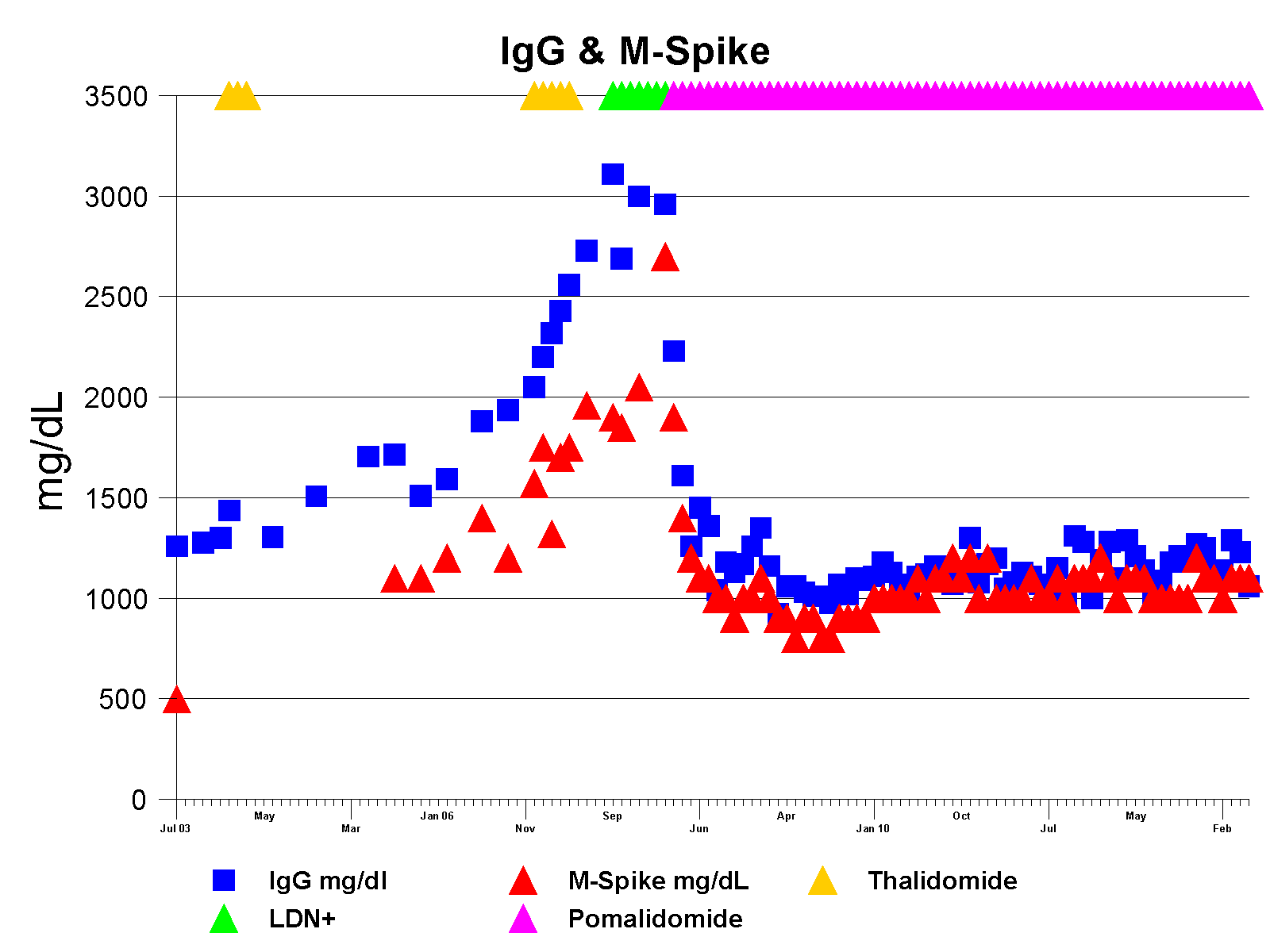 |
Immunoglobulin G (IgG) is one of several immunoglobulins which respond to an infection in the body. The IgG measurement is the sum of the BAD (monoclonal) immunoglobulins produced by the cancerous plasma cells, and the GOOD immunoglobulins produced by normal plasma cells. M-Spike is a measurement of the BAD stuff, so the difference between M-Spike and IgG is the good stuff. M-Spike is perhaps the best blood-test measure of actual tumor burden, even if it is not especially accurate. Down is good; a person without myeloma has no M-Spike (zero).
When I had my highest M-Spike in March 2008, 2700 mg/dL (2.7 g/dl), a PET scan showed distinct regions of cancer activity in three bones, and an x-ray suggested a weakening of one bone, though none of the bones had broken. With M-Spike now at about 1100 (1.1), we hope that the bones are stronger than they were at that time. X-rays, bone density measurements, and a more-recent PET scan do not suggest any bone problems. |
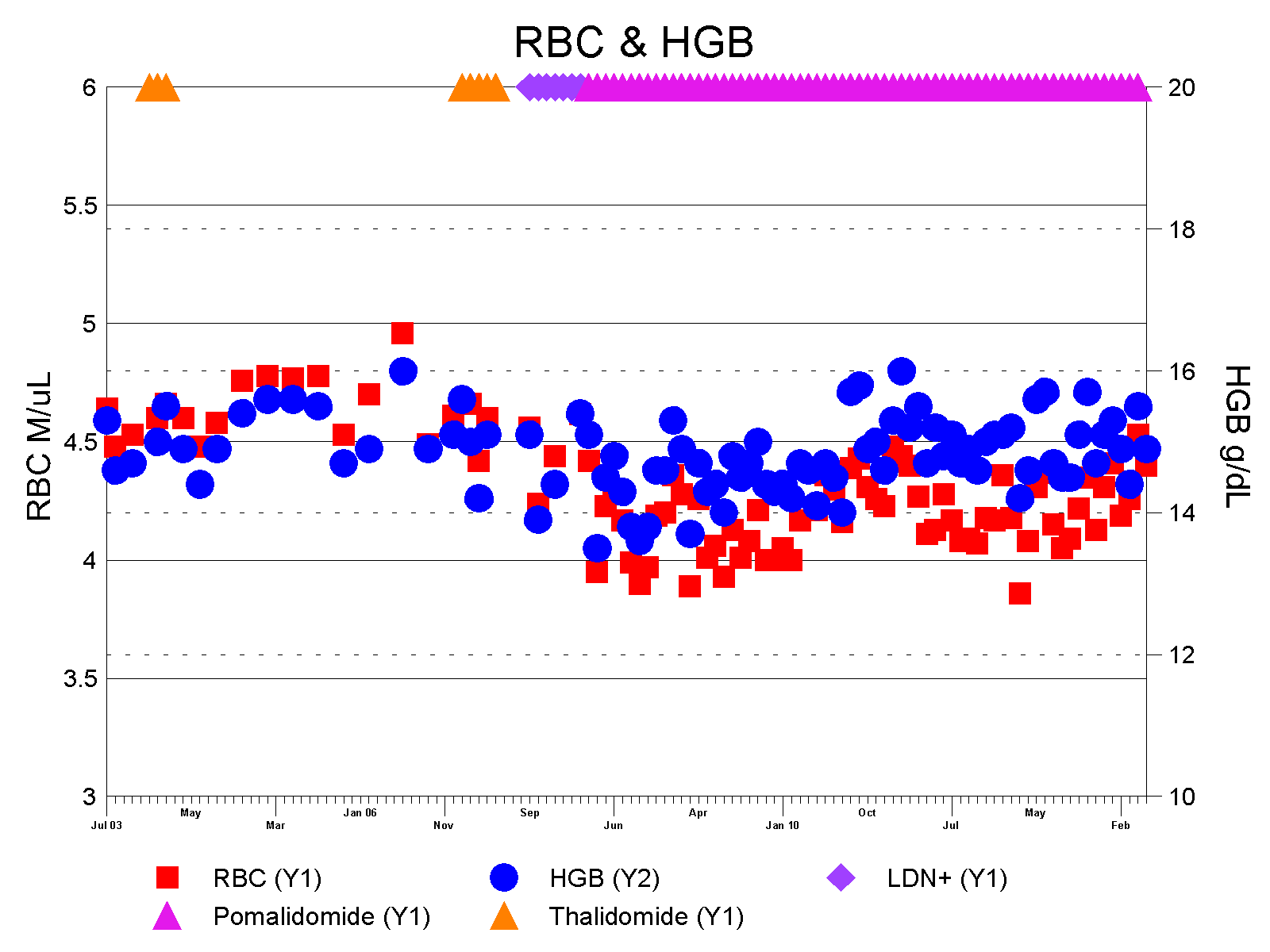 |
Myeloma can suppress red blood cell counts, and so can some of the treatments, including the trial drug pomalidomide which I am now taking. In either case the result is anemia, one of the CRAB symptoms described below.
My red cell count (RBC) has always been on the low side of normal, but many of the most-recent counts have been slightly below the bottom of the reference range. It's something to watch, but not a matter of great concern yet, certainly not anemia. Hemoglobin is still well within the reference range, and I can still run a marathon. |
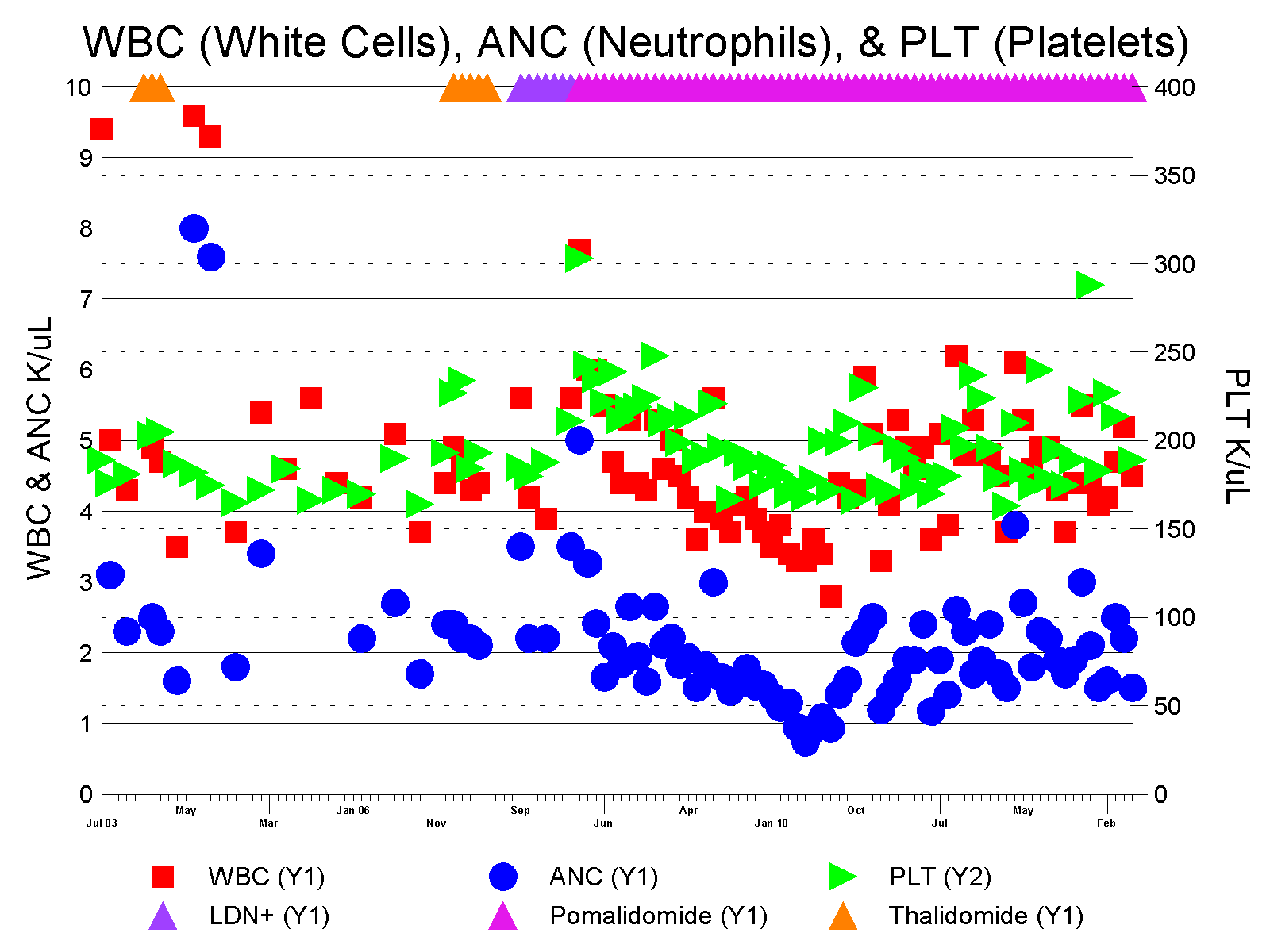 |
This busy chart shows white blood cell counts (WBC), neutrophil counts (ANC) (a major component of the white cell count), and platelets (PLT).
WBC and especially ANC (shown as red and blue) are key components of the body's immune system, and bounce up and down, usually together, in response to microbial threats within the body. Platelets are essential for blood clotting. The study drug pomalidomide can suppress any of these counts, so we keep track.
Since discontinuing DEX, the pomalidomide appears to be suppressing neutrophils, which of course brings the total white count down too. Until August, 2010, the chart shows neutrophils measured at 6:30 am in Mayo Clinic. Beginning in August, it shows the higher neutrophil counts measured in the afternoon at my local clinic. |
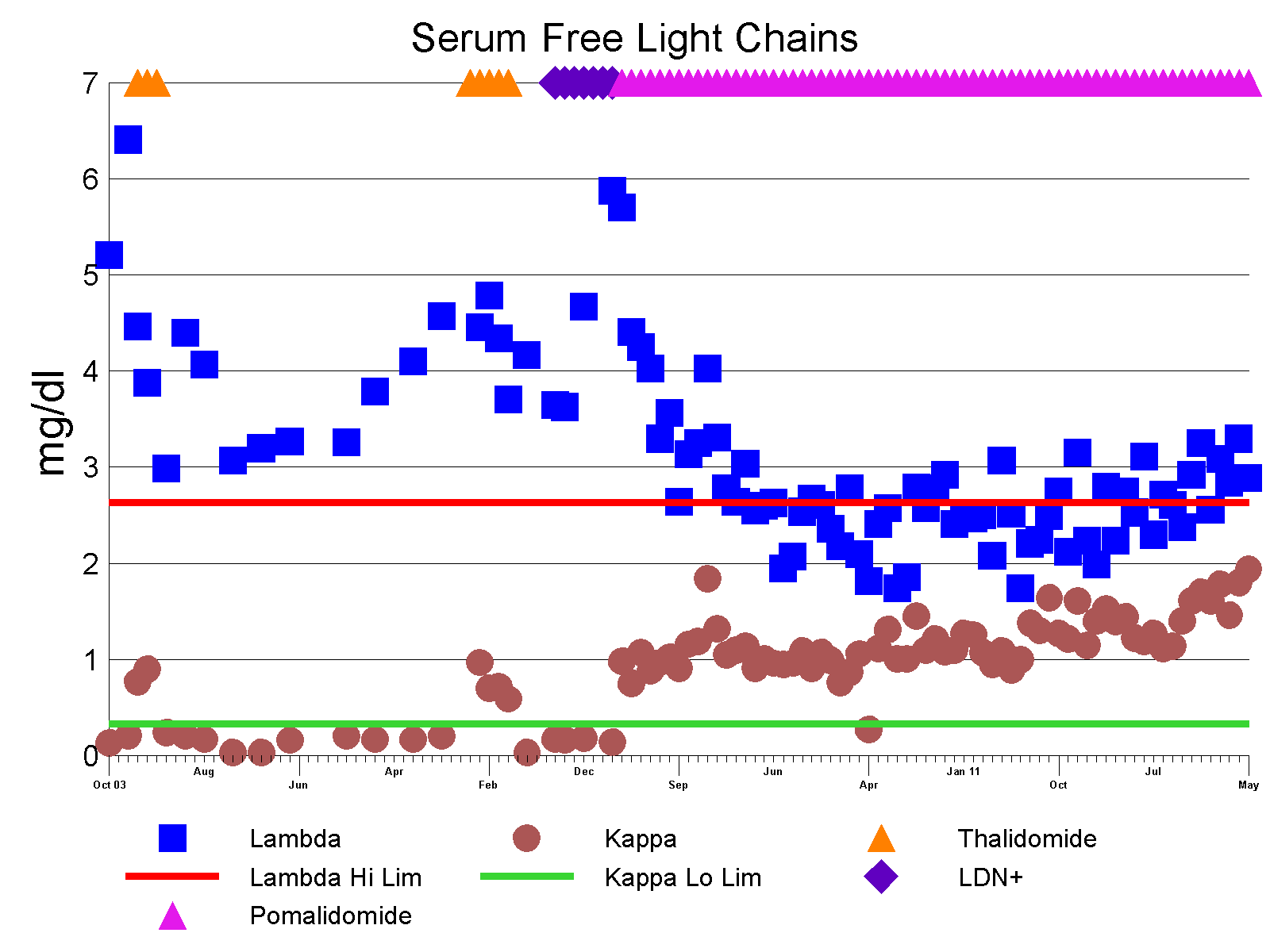 |
Serum (blood) free light chains are a particularly dangerous type of protein expressed by myeloma cells in about 30% of patients. This myeloma is also called "light chain deposition disease." I have elevated lambda light chains but they have been at a very low level, barely double the upper limit of the normal range, and are now on treatment they are usually within the normal range. My Mayo doctor is not concerned about it, so neither am I. |
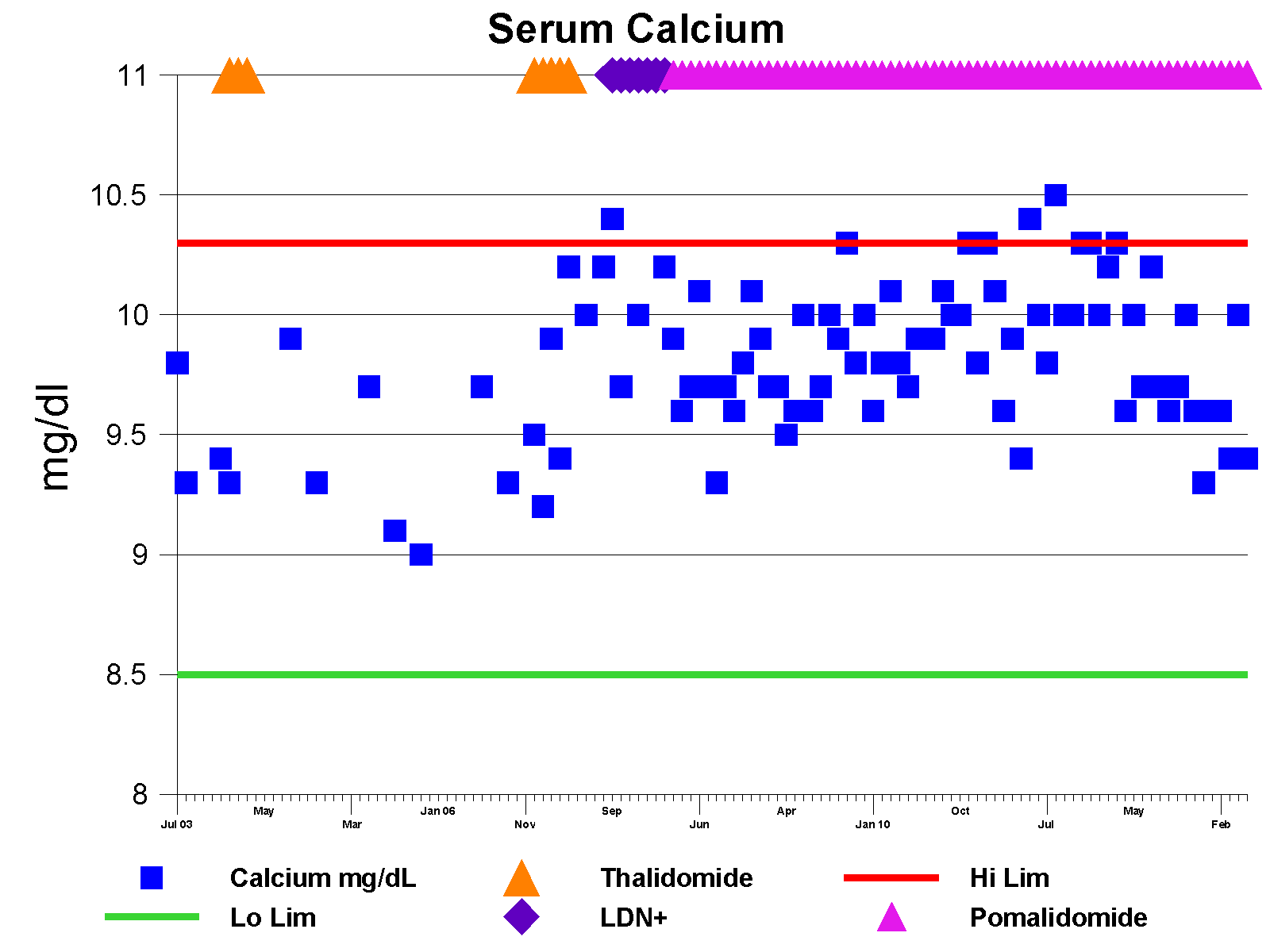 |
Myeloma is considered "active" and no longer "smoldering" when any of the CRAB criteria are met. Calcium, Renal (creatinine), Anemia (hemoglobin and red blood cell count), and Bone lesions. Some doctors think that unexplained peripheral neuropathy (PN) should be a fifth CRAB criterion. My serum calcium has gone above the reference range several times, so although I'm not worried about it I am watching it. A PET scan in March of 2008 also showed bone lesions, so the "B" of CRAB is satisfied anyway. My myeloma is active, Stage I.
Happily, though, more-recent PET scans have revealed no bone lesions - the treatment is working. |
Updated May 14, 2013.




